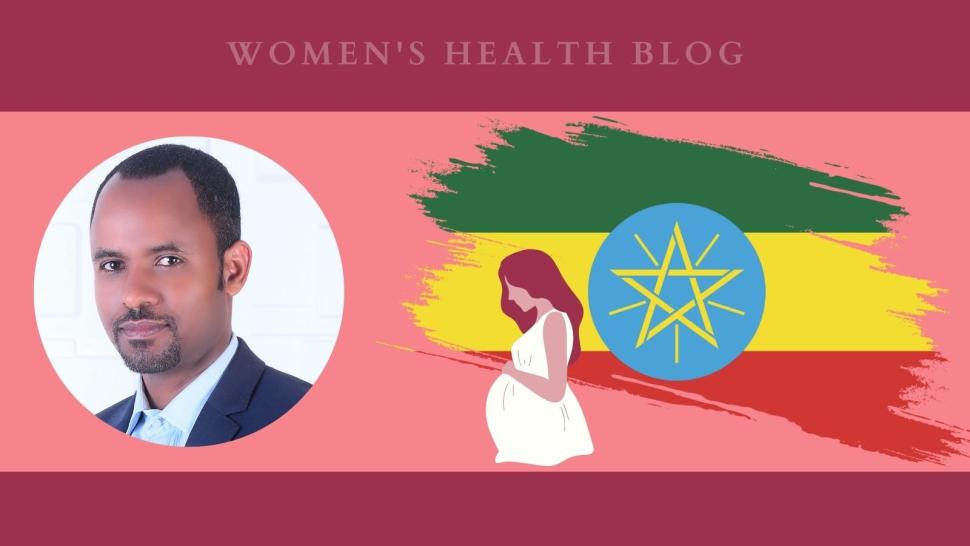Interviewee: Abera Kenay Tura, PhD, Assistant Professor of Maternal and Child Health at Haramaya University, Ethiopia; Authors/Editors: Romina Garcia de leon, Shayda Swann (Blog Co-coordinators).
Published: September 29, 2023
Could you tell us more about your research?
I'm leading a research team working on surveillance of severe maternal morbidity and deaths. We recently established a research platform called the Ethiopian Obstetric Surveillance System (EthOSS), where we are registering cases of women having complications like hemorrhage, hypertensive disorders of pregnancy, and severe anemia as well as sepsis. These are the major conditions that lead to deaths of women in Ethiopia and we are not only registering these conditions but also establishing a Confidential Enquiry into Maternal Deaths Committee in collaboration with the University of Oxford that will review cases of women who died from complications in pregnancy and childbirth. These committee members, trained by experts from the University of Oxford and EthOSS investigators will review thoroughly the cases of women to identify why a woman died and then make recommendations for improving care of women. As part of this work, we are also collaborating with countries with similar systems, including Canada. You might be aware that there is a Canadian Obstetric Surveillance System where they are also registering maternal mortality and severe maternal morbidity cases.
What led you to this field of research and what made you want to study maternal health outcomes?
As someone who is from a low-income country, it's common to hear about deaths of women or women having severe complications during pregnancy, childbirth, or the postpartum period. Pregnancy and childbirth are normal physiologic processes and it's a period of joy and celebration for many, but for women who are living in low-resource countries, like ours, it is a period of worry and concern. For example, the risk of death would be high for pregnant women in countries like ours. In order to at least contribute some to this problem, I want to have studies like this. And of course, this was started when I applied for my PhD study on maternal health programs. As a country, it makes sense to study this so that lessons can be learned for improving care of women so that pregnancy and childbirth would be a time of joy and celebration as many others have elsewhere.
Are there any interesting findings from your research that you'd like to share?
We know why women are dying. In many low-resource countries, we say that women are dying from bleeding, hypertensive disorders of pregnancy, or severe infections/sepsis. But what we learned from our confidential inquiry into maternal death is beyond this. It's true that women who died had bleeding for example or she might have had hypertensive disorders of pregnancy, but the main underlying cause, as has been indicated by the review of the committee, is our health systems’ failure in responding to women who have such complications. If the health system was ready to respond to women's needs, we could have saved many women. In 9 out of 10 deaths that we have reviewed, there have been delays in helping the women get the appropriate care on time. These delays could happen at what we call “delay one”, which is the delay in recognizing that the woman is in danger, or “delay two” which is the failure of women to reach appropriate facilities on time. And “delay three” is delay in getting the appropriate care after reaching facilities. In many of the cases, even women who reached facilities didn't get the appropriate care as compared to the national guidelines or the international best practices. We learned that almost all deaths were preventable if the health system was ready to respond to the women's complications on time.
We have seen, for example, problems with triaging, meaning when transferring women from lower to higher facilities, there are delays in making decisions. Facilities should know what they can do and what they can't do so that a woman can be transferred to the appropriate facilities where she can get care. But at the same time, we also learned that there are screening issues for women with medical problems who didn’t know that they are pregnant or didn't know that they have these underlying medical complications, which might make the pregnancy more prone to complications.
What impact do you hope to see with your work?
We are working with a network of other countries under the auspices of the International Network of Obstetric Survey Systems (INOSS), where I’m the vice chair for Africa, that have already shown that it's possible to reduce maternal mortality, especially through using this system of obstetric surveillance and confidential enquiry of maternal deaths. From our piloting so far in eastern Ethiopia, we learned that it's possible to change the system in responding to the tragic loss of women. I want to scale up this to a national program and want to see that our intervention would save more lives in the future like it's doing in other countries, including yours.
You can find out more about Abra's work at:
Pub Med, Linkedin, Researchgate, or contact him by e-mail: daberaf@gmail.com
